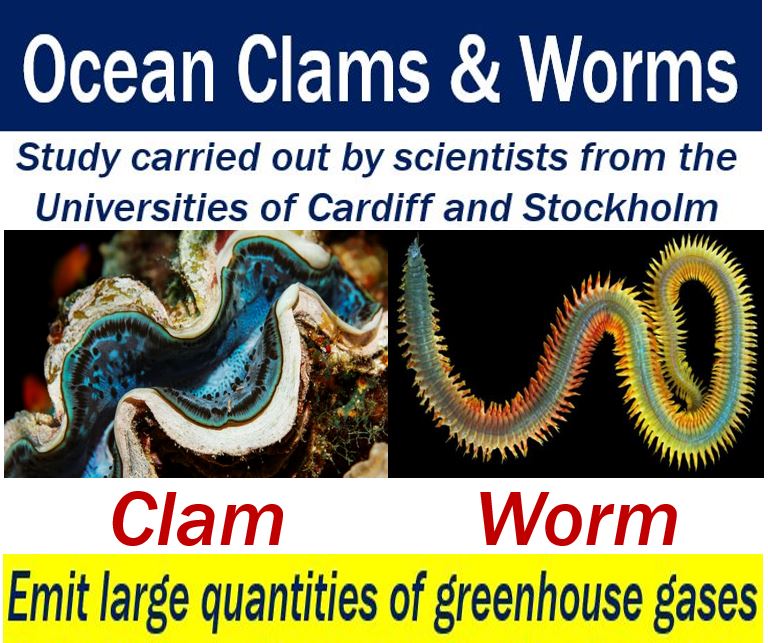Ocean clams and worms emit huge quantities of greenhouse gases into the atmosphere, scientists claim. Cardiff University and Stockholm University researchers showed that clams and worms emit methane and nitrous oxides. Methane and nitrous oxides are greenhouse gases. Bacteria in the creatures’ guts produce the gases.
Greenhouse gases trap heat in the atmosphere. They contribute to worldwide temperature rises, i.e., global warming.
Ocean clams and worms release methane gas into the water. It then makes its way into the atmosphere.
This methane contributes to global warming. Methane is a very powerful greenhouse gas. In fact, it has twenty-eight times the warming potential that carbon dioxide has.
Clams and worms in the Baltic Sea
The research team carried out a study on total methane emissions from the Baltic Sea. According to their findings, about 10% of total methane emissions come from ocean clams and worms.
Total methane emissions by clams and worms in the Baltic Sea are equivalent to what 20,000 dairy cows produce. In other words, they are producing the same amount of methane as one percent of the British cow population.
The scientists wrote in the journal Scientific Reports that climate experts have ignored this source of greenhouse gas. In fact, their latest findings should have a profound impact on decision makers, the authors claim.

Some people have proposed farming clams, oysters, and mussels. They suggest it would be an effective solution against human pressures on our environment.
However, the authors warn that stakeholders need to consider these potential impacts. In other words, before promoting shellfish farming in the ocean, beware that these creatures are large-scale methane emitters.
We ignore emissions from clams and worms
According to Dr. Ernest Chi Fru:
“What is puzzling is that the Baltic Sea makes up only about 0.1% of Earth’s oceans. This implies that globally, apparently harmless bivalve animals at the bottom of the world’s oceans may, in fact, be contributing ridiculous amounts of greenhouse gases to the atmosphere.”
Furthermore, we have not accounted for methane emissions from clams and worms. Co-author, Dr. Chi Fru, works at Cardiff University’s School of Earth and Ocean Science.
Lead author, Dr. Stefano Bonaglia, explained that small ocean animals may act like cows in a stable. In fact, both groups are important methane contributors due to their gut bacteria.
Dr. Bonaglia, from Stockholm University, said:
“These small yet very abundant animals may play an important, but so far neglected, role in regulating the emissions of greenhouse gases in the sea.”
The scientists analyzed isotopes, trace gas, and molecules from the clams and worms to arrive at their results.
They analyzed both the indirect and direct contributions that these small creatures were having on greenhouse gas production. Specifically, they focused on methane and nitrous oxide production.
Their findings showed that sediments containing worms and clams had high methane production. In fact, those sediments’ methane production was eight times higher than the bare sediments.
Not all good intentions lead to ideal results. In fact, sometimes they are counter-productive. Last year, a study found that biofuels emit more greenhouse gas than gasoline (UK: petrol).
Video – Clams and worms produce greenhouse gases
This ‘Science and More’ video explains that clams and worms release large quantities of greenhouse gases.
